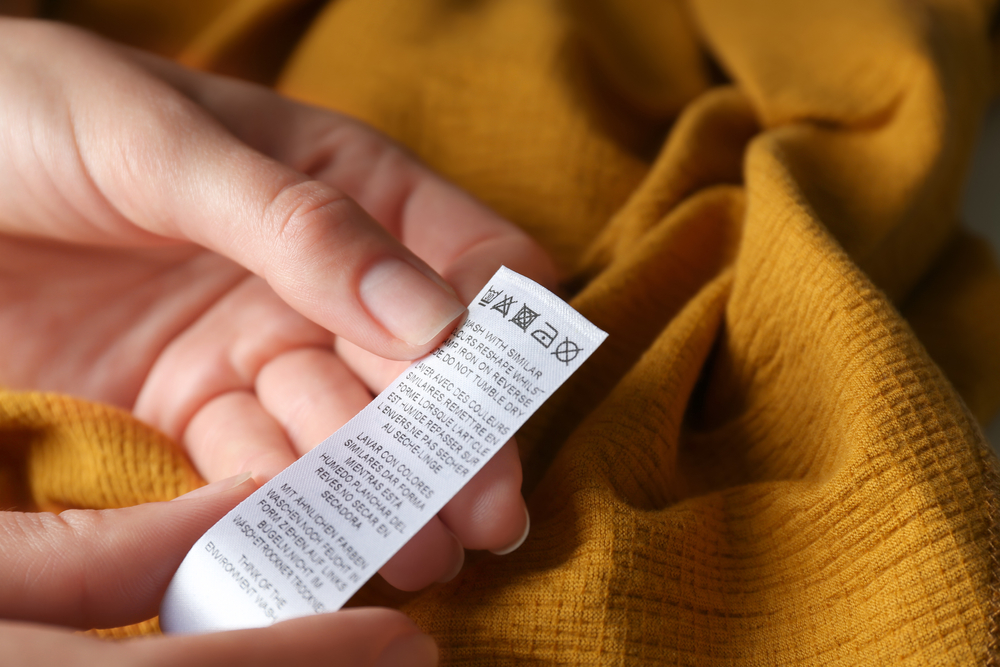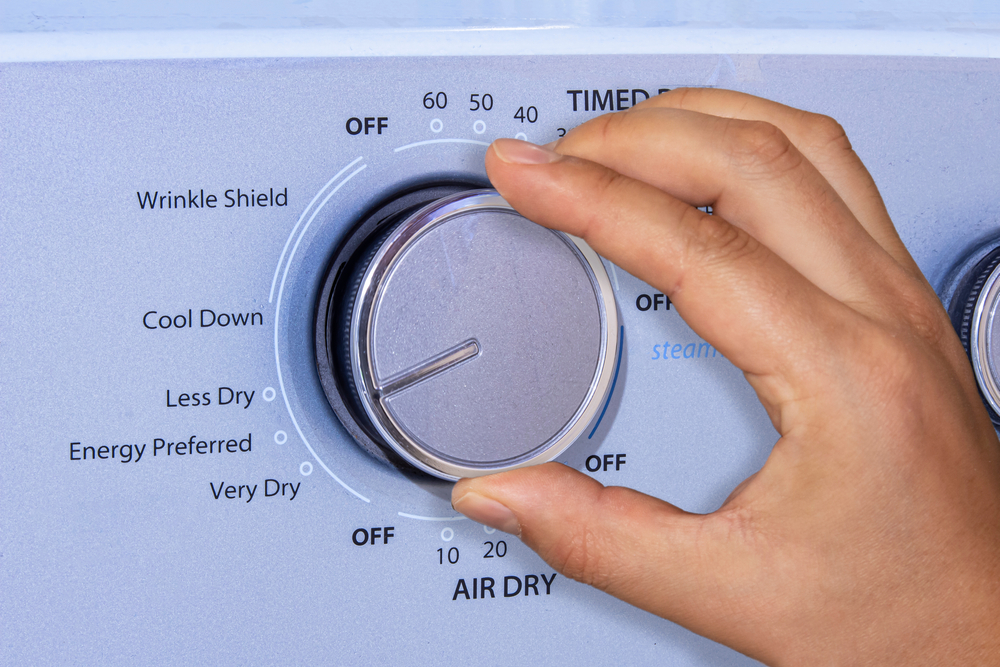All of our apartments at 17th Place in Webb City and 20th Place in Joplin have washer and dryer hookups, giving you the freedom to do laundry on your schedule and with your own appliances. You won’t have to worry about who is next in line for the washer and dryer, and you won’t need to monitor your laundry if someone else is there. Having hookups for these appliances is one of the many great amenities at our apartment complexes.
Read our guide to help you get the most out of your washer and dryer as part of the modern appliances in your place. We want you to have the best experience at your apartment.
Storage Areas in Your Laundry Room
Maximize the available space, no matter how large your laundry room is, with the right storage options. Make use of the shelves above the washer and dryer to hold detergent, fabric softener, and other essentials within easy reach. Install wall hooks or a pegboard to organize frequently used items like clothespins, lint brushes, and reusable bags. Use stackable bins to separate clean and dirty laundry or to store rarely used items neatly.
Sliding organizers or pull-out baskets as stand-alone storage solutions offer excellent ways to make use of hard-to-reach spaces. Label each compartment for specific purposes, such as stain removers, sewing kits, or spare buttons, to reduce time spent searching for what you need. Place collapsible drying racks in a designated corner or install a foldable one on the wall to save floor space while allowing flexibility for drying delicate garments.
Use the Right Detergent
Choose the right laundry detergent to make your washing machine make the best use of its cycle while also protecting fabrics. Match the detergent type to your washing machine so that whatever cycle you run gets your clothes as clean as possible. Liquid formulas work well for high-efficiency washers. Powder excels with heavily soiled laundry. Use recommended amounts based on load size and the cycle you choose.
There are also choices based on your family’s needs. Detergents without dyes and chemicals may work well for people with sensitive skin or allergies. Pods are convenient to use because they deliver precise amounts of detergent. Just make sure the wash cycle you use is compatible with laundry detergent pods.
Do you frequently have tough stains to get out? Detergents with enzymes are great for grease, grass, or wine, as they break down proteins so that the wash water can get a hold of these stains to whisk them away. If you want eco-friendly options, look for detergents with biodegradable ingredients and natural scents without artificial dyes.
Store detergent properly in a cool, dry location, like on the shelves above your washer and dryer. Don’t overuse detergent in every load so you don’t waste it. Excess detergent can harm your washer over the long term. For added freshness, mix boosters like baking soda or vinegar when needed.

Always Follow Care Instructions on Clothing
Following care instructions on clothing preserves the fabric on your clothes and makes them last longer. Check labels before washing to identify special requirements, such as hand-washing, dry-cleaning, delicate cycle, or cold-water settings. Group clothing by similar care needs and then colors. For example, delicate silk and satin should be washed together. Make sure cotton shirts are washed on standard cycles.
Use appropriate water temperatures so that fabrics aren’t stressed during the wash cycle. Using a temperature that is too high can cause color fade.
Wash darks and brights separately to prevent color bleeding, which can ruin the colors of your clothes. If you accidentally put a red in with the whites, the whites might have a pink tint to them.
Avoid overloading the machine, which can cause problems. Too much laundry in one load might stress the motor in the drum. The load could become unbalanced, which could also create issues with the motor.
For delicate items, place garments in mesh laundry bags to protect them from snags or stretching. That way, the delicate items don’t accidentally unravel when getting them in and out of the washing machine.
Dry clothes according to their specific instructions to prevent shrinkage, fading, or wear. Hang-dry lightweight fabrics and flat-dry knits to maintain their shape. For items requiring ironing, match the heat setting to the fabric type and use a press cloth for extra protection. Consistent attention to care instructions keeps your wardrobe looking its best.
Additional Tips:
- Reverse clothes with prints or embellishments before washing to minimize wear.
- Spot-clean stains immediately to prevent permanent discoloration.
- Use a fabric shaver to remove pilling from sweaters and soft fabrics.
- Avoid using fabric softeners on activewear to maintain its moisture-wicking properties.
- Rotate delicate garments between wearing to reduce laundry frequency and prolong their life.
Lint Trap and The Lint Dryer Duct
Empty the lint trap after each drying cycle to prevent clogs and potential overheating of the dryer. Cleaning the lint trap also improves airflow and reduces drying time, which saves on your electricity bill. Check the trap’s edges and corners for any stubborn lint buildup, and clean it thoroughly with a soft brush or vacuum when necessary.
Inspect and clean the dryer duct periodically to remove trapped lint and debris, which can also cause problems. Disconnect the duct and use a long brush or vacuum attachment to clear out any obstructions. Reconnect it securely to maintain efficient air circulation during drying cycles.
Keep the dryer area free from lint buildup by vacuuming around and behind the appliance regularly. Periodically check on the exterior vent cap remains unobstructed to allow proper ventilation for the dryer duct vent. We can show you where this vent cap is. If you ever have any problems with the dryer duct vent, contact maintenance.
Additional Tips:
- Use a flashlight to check hard-to-see areas inside the duct for lingering lint.
- Avoid drying overly damp loads, which create excess lint and prolong drying times.
- If any clothing is too wet, wring it out before putting it in the dryer.
Heat Settings on the Dryer
Selecting the right dryer heat setting makes sure the fabric of your clothing isn’t damaged. Use the air-dry cycle for delicate garments, shoes, or heat-sensitive materials, as it relies solely on tumbling without heat.
For everyday items like cotton shirts or denim, low and medium heat settings prevent excessive wear and shrinkage. It’s best to use the lowest heat setting whenever possible to avoid excessive use of the heater so that it lasts longer.
High heat works best for towels, heavy fabrics, and sanitizing loads but should be used sparingly to avoid stressing out the fabric too much. Higher heat levels can generate more lint, and excessive lint can make the fabric weaker over time.
Modern dryers offer specialized cycles tailored to different needs, so use these to make your drying requirements easier. The Delicate or Gentle cycle employs low heat and slower tumbling to safeguard fine fabrics and to prevent snags and gathers. The Permanent Press cycle uses medium heat and a cool-down phase to reduce wrinkles in synthetic blends. For bulky items like comforters, the Bulky/Bedding cycle optimizes airflow and drying power so that the innermost parts of the bedding get dry. Advanced models may include moisture-sensing technology, which automatically adjusts drying times to prevent over-drying while making sure items are thoroughly dry when the cycle completes.
Additional Tips:
- Use the “Timed Dry” setting on low heat for items that require precise control over drying time.
- Select the “Quick Dry” cycle for small loads or last-minute needs.
- Combine wool dryer balls with heat settings to reduce drying time and static.
- Pause drying mid-cycle for delicate garments to air-dry partially, minimizing heat exposure.
- Store frequently used settings as favorites on advanced dryer models for convenience.

High-Efficiency Washers and Dryers
High-efficiency washers use less water per cycle and rely on advanced agitation movements to clean clothes more effectively compared to traditional washers. High-speed spin cycles extract more moisture, which shortens drying times and decreases energy use.
Modern high-efficiency dryers feature moisture sensors that automatically adjust drying times, preventing over-drying and saving electricity. Many models include eco-friendly settings, such as lower-temperature drying, that consume less energy while thoroughly drying your clothes. Additionally, better insulation and airflow systems shorten trying times by retaining heat better, which also lowers your energy costs.
The initial cost of high-efficiency appliances often pays for itself through long-term savings on utility bills, which can add up when you think about how many times you use the washer and dryer in a single week. Regular maintenance and cleaning of both the washer and dryer can make them last as long as possible.
Additional Tips:
- Check for Energy Star-certified models and compare the utility usage on the appliances’ labels as you shop.
- Use high-efficiency (HE) detergent to avoid residue buildup and maintain washer performance.
- Opt for machines with larger capacities to reduce the number of loads.
- Program delayed start cycles to run during off-peak hours for lower energy rates.
Removing Stains
Removing stains before they set in requires quick action, even if you can’t wash the clothes right away.
Blot any liquid spills immediately with a clean cloth to absorb excess liquid without spreading the stain. For oil-based stains, like grease, apply a small amount of dish soap or a stain remover directly to the affected area before laundering. For protein-based stains, like blood or sweat, use cold water to avoid setting the stain and a gentle enzyme-based stain remover to break down the residue. Treat dye-based stains, such as wine or ink, with an oxygen-based bleach stain remover or a specialty stain remover designed for tough discolorations.
Test any stain removal product on a hidden area of the fabric to check the clothing for color-fastness. Launder stained items separately using the hottest water safe for the fabric to maximize the cleaning process. Avoid drying items with lingering stains because the drying cycle can set the stains permanently.
It’s a good idea to find the best stain removal solution for your needs. Many top brands work well for pre-soaking or spot removal, as well as adding the stain remover to the laundry load. Follow the directions on the package for best results.
Additional Tips:
- Pre-soak heavily stained garments in a mixture of water and baking soda or vinegar.
- Use rubbing alcohol to lift ink stains but rinse thoroughly afterward.
- Sprinkle salt or baking soda over fresh wine spills to absorb moisture before treating.
- Remove grass stains with a mixture of white vinegar and dish soap.
- Store a chart of common stain types and removal methods near your laundry supplies for easy reference.
Cleaning the Washer
Modern washing machines often have a cleaning cycle that requires a special detergent to run through the machine. What typically happens is that the washer fills up with hot water as high as it can go so that the specialized detergent can seep into every part of the washing machine to remove any mold or mildew. We recommend cleaning the washer once a month for the best results.
A home-based remedy is to use a combination of vinegar first and then baking soda in two complete wash cycles for a top-loading washer:
- Set the washer to its highest water level and hottest temperature.
- Start the wash cycle.
- Add 4 cups of vinegar as the washer’s drum fills up to circulate the vinegar throughout the washing machine.
- Pause the cycle after the drum fills with water.
- Let it sit for 60 minutes.
- Restart the cycle and let it finish completely.
- Then, repeat steps 1 through 6, only this time using 1 cup of baking soda instead of using vinegar.
Get the Most Out of Your Apartment Complex in Webb City
You’ll love the freedom that comes from having in-apartment washer and dryer hookups for laundry. Contact us to schedule a tour of our apartments in Webb City or Joplin. We look forward to meeting you!



